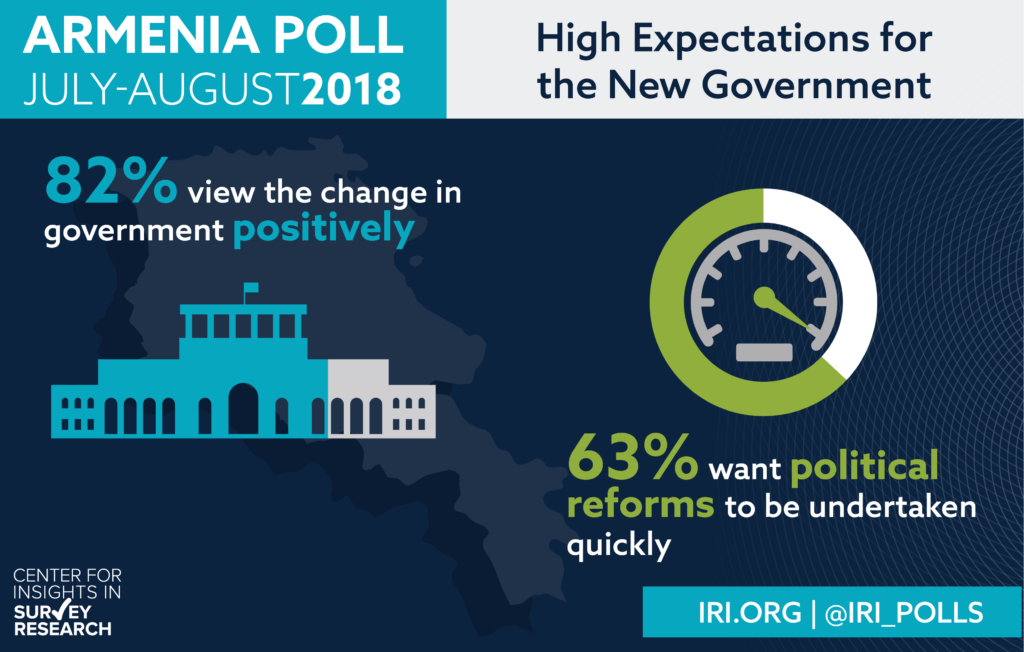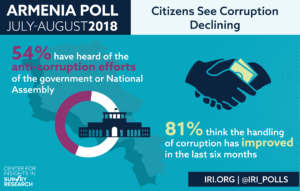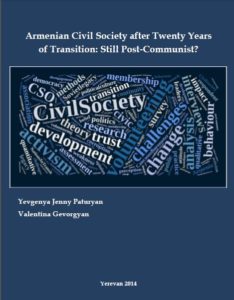
Armenian citizens are showing widespread optimism about the country’s future and Prime Minister Nikol Pashinyan’s government, according to new national poll from the International Republican Institute’s (IRI) Center for Insights in Survey Research:
- A combined 82 percent view the new government “very positively” (39 percent) or “somewhat positively” (43 percent). Sixty-three percent would like to see political reforms undertaken quickly, compared to 34 percent who prefer a “more gradual than not” (24 percent) or “definitely gradual” (10 percent) transformation.
 A clear majority of respondents (73 percent) believe Armenia is going in the right direction, and a combined 81 percent think the future will “definitely be better” (37 percent) or “hope that the future will be somewhat better” (44 percent).
A clear majority of respondents (73 percent) believe Armenia is going in the right direction, and a combined 81 percent think the future will “definitely be better” (37 percent) or “hope that the future will be somewhat better” (44 percent).- The poll also reflects strong approval ratings for anti-corruption efforts. Eighty-one percent believe that the corruption problem has improved, compared to 15 percent who say it has remained the same and two percent who think it has deteriorated.
“The optimism reflected in this poll presents the new government with an unprecedented opportunity to spearhead necessary reforms and strengthen Armenia’s democracy,” said Stephen Nix, IRI Regional Director for Eurasia. “If the government does not act in a timely manner, it risks losing this momentum for positive change.”
 Armenia is one of several key country cases, including Ecuador, Ethiopia, the Gambia, Malaysia, and Uzbekistan, where democracy has a window of opportunity to make progress, underlining the value of U.S. engagement with them, according to a recent Carnegie Endowment report.
Armenia is one of several key country cases, including Ecuador, Ethiopia, the Gambia, Malaysia, and Uzbekistan, where democracy has a window of opportunity to make progress, underlining the value of U.S. engagement with them, according to a recent Carnegie Endowment report.
Other observers suggest that recent developments suggest that Armenia could become a ‘laboratory for post-Soviet democracy’.
Armenian civil society’s participation in the My Step alliance symbolizes a new “political responsibility” after they assisted Pashinyan, who was left without support by all political forces during the revolution in April-May, Yerevan State University’s Zhanna Andreasyan writes for Open Democracy.
Among the main differences between the Georgian and Armenian transitions, those who carried out the “Rose Revolution” were from the political elite, said Johnny Melikyan, an expert in Georgian studies.
 “The main purpose of the Armenian revolution was to overcome the corrupt regime, reach resignation and implement radical political changes in the country,” said analyst Narine Mkrtchyan, the keynote speaker at a discussion hosted by the Armenian Center for International and Security Studies (ACNIS).
“The main purpose of the Armenian revolution was to overcome the corrupt regime, reach resignation and implement radical political changes in the country,” said analyst Narine Mkrtchyan, the keynote speaker at a discussion hosted by the Armenian Center for International and Security Studies (ACNIS).
Democratic Learning in Armenia: How Does It Compare to Color Revolutions?
Speaker: Miriam Lanskoy, Senior Director for Russia and Eurasia, National Endowment for Democracy.
Wednesday, October 24, 2018 – 12:00pm to 1:45pm
Sakharov Seminar on Human Rights
CGIS South Building, 1730 Cambridge Street, Room S354







